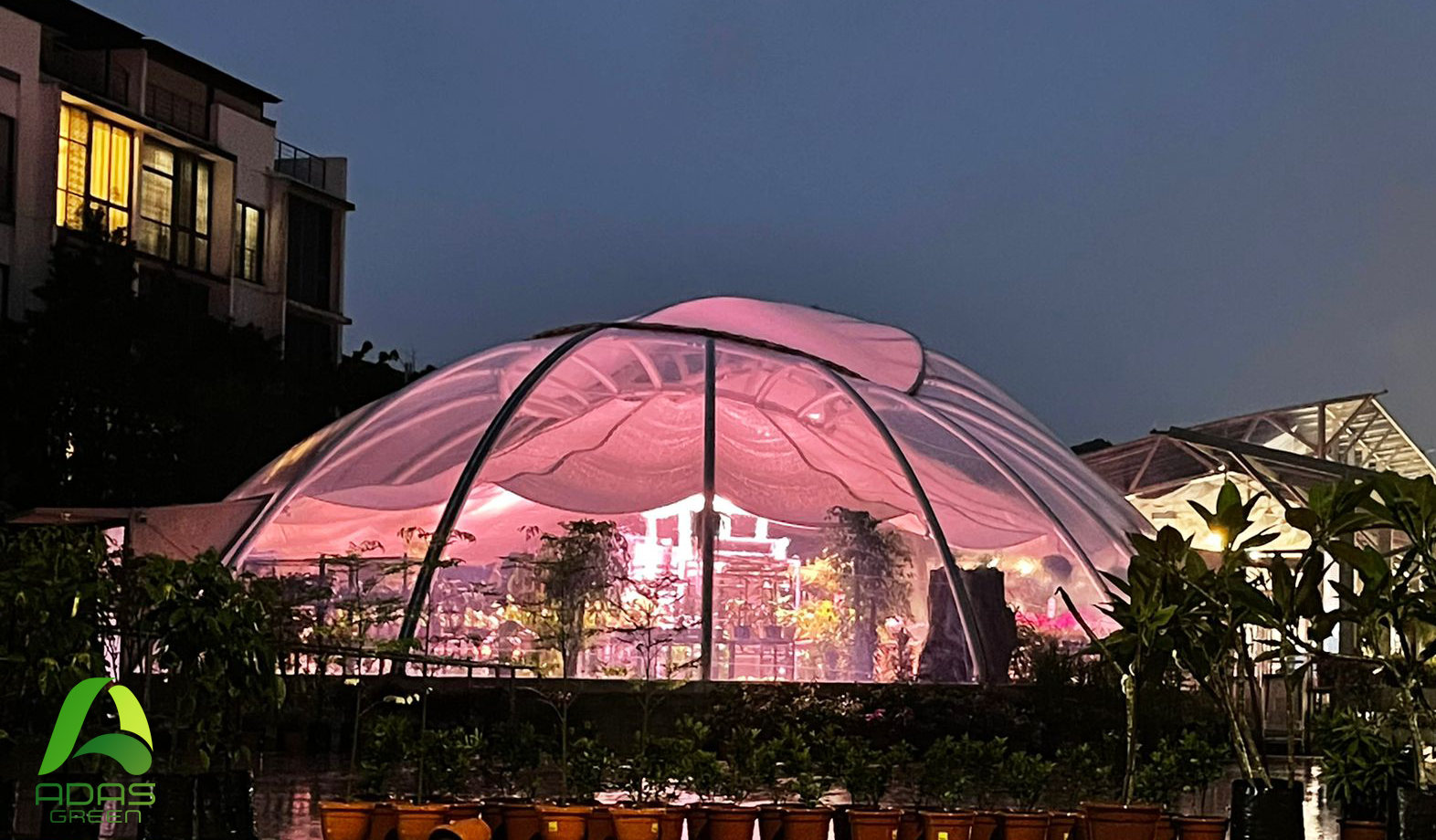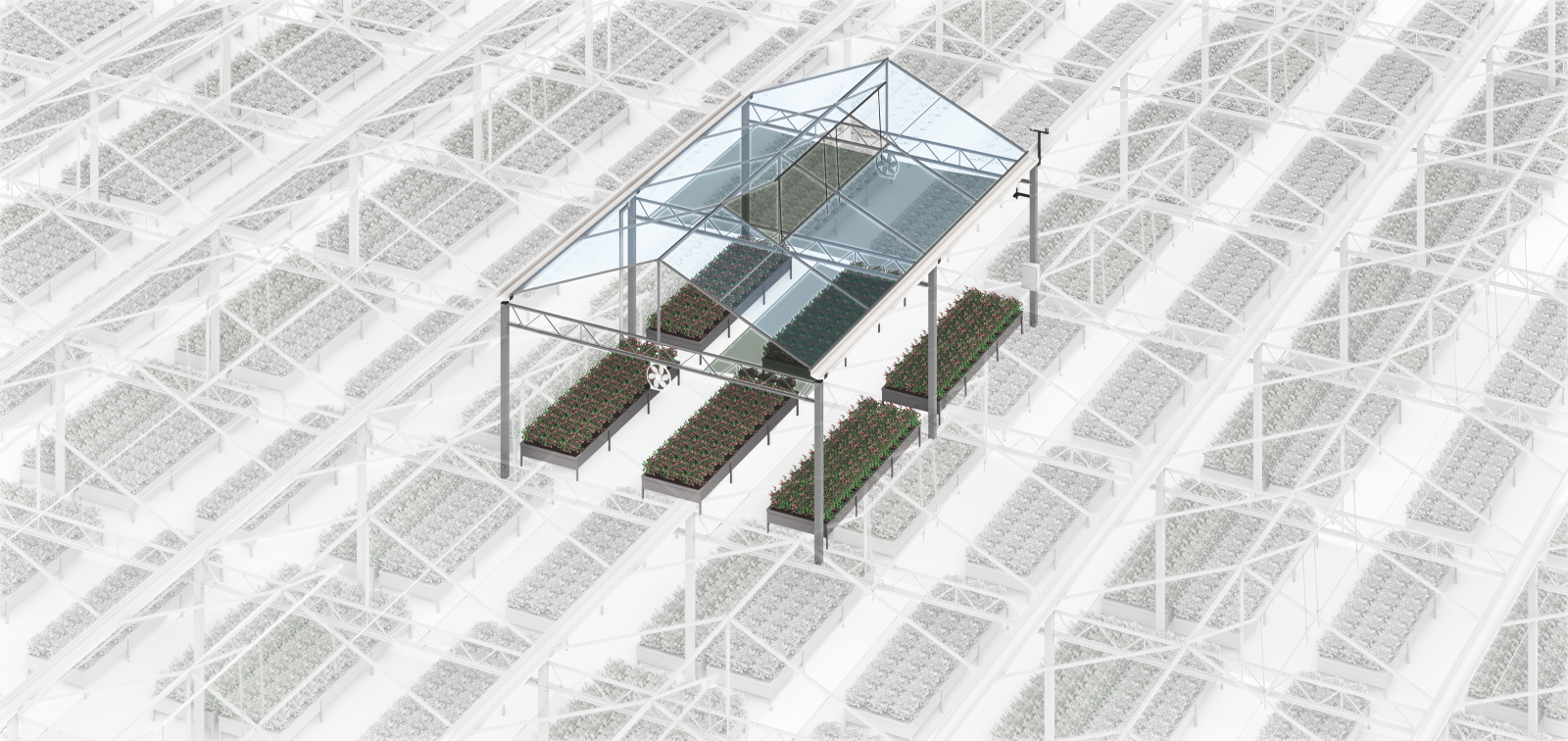Why You Should Replace Your Greenhouse Roof with ETFE Film
The Vision for Tomorrow
The Singapore government’s goal of 30 by 30 aims to expand the local food production up to 30% by 2030. To achieve this goal, the agri-food industry is encouraged to upgrade their operations to produce higher yields and adopt more sustainable practices. As part of the long-term plan, these upgraded farms will also serve as an agri-food tourist hub, showcasing the latest technologies within futuristic, high-tech environments.
To support this advancement, ADAS® Green offers a combination of modernized ETFE greenhouse structures and IoT system integration. Our Smart ETFE Greenhouses help reduce operational and maintenance costs while creating a customizable environment to provide the ultimate growing conditions for any crops or plants.

The Far East Flora Dome at Evans Road
Benefits of ADAS® ETFE Film
With our experience in the construction of lightweight structural systems at Multimedia Engineering Pte Ltd, we have observed the potential of ADAS® ETFE Films for greenhouse structures. Compared to commonly used greenhouse roofing materials, such as glass, polycarbonates and PE/PU films, ETFE has a higher UV and visible light transparency, with unrivalled durability.
A single layer of ADAS®ETFE greenhouse film weighs less than 200g/m2, and is typically only 100µm thick, which makes it over 70 times lighter than a 6 mm glass panel. This means that ETFE film will significantly reduce the structural supports needed in any given project, all in all leading a more cost-efficient structural system.
Although materials such as polycarbonates and PE/PU films are much lighter than glass, they are highly prone to UV degradation1 which increases hazing and brittleness over time. The immediate effect of UV degradation on these materials means that they will start to yellow, which significantly reduces light transmission into the greenhouse. Hot and humid environments accelerate this process of yellowing. Thus, multiple replacement works need to be done within a few years. On top of this, these materials are vulnerable to excessive algae growth both inside and outside of the greenhouse, which drastically reduce light transmission and require constant cleaning.
However, ADAS® ETFE films experience little to no UV degradation, maintaining their high transparency level for up to 20 years and beyond. Due to its non-stick, self-cleaning properties, ETFE film is a very low maintenance material, with stains or dirt being washed away by rainwater. The durability of ETFE film can be further improved with anti-condensation and anti-fungal treatments.

Left to right: Polycarbonates vs ETFE vs PE Films
Additionally, ADAS® ETFE Films are fire-certified materials according to both Singapore and International Fire Standards. In Singapore, it is classified as a Class 0 material, which means that it is non-combustible throughout, with no surface flame spread. This makes ETFE film the safest greenhouse material on the market.
For crops that require a specific amount of visible light transmission and UV levels, the ADAS team will be able to advise regarding the most suitable ETFE film from the wide selection available.
UV degradation 1 : Cracking and disintegration of materials exposed to ultraviolet radiation.
Studies conducted on ETFE film and glass used for architectural purposes show that ETFE film has better visible light and UV transmittance even when double-layers are used. The visible light and UV transmittance of ADAS® Greenhouse ETFE film, with a typical thickness of 100μm, can be as high as 95% and 90% respectively.
Why should one replace their existing greenhouse roofing?
The main aim of a greenhouse should provide a controlled environment where the grower can manage the internal growing conditions, creating an optimal growing condition for any type of crop. There are many factors that affect plant growth, but we cannot achieve the optimal condition if the UV & Light transmission levels are heavily affected by the roofing materials due to clouding or algae growth. Thus, selecting the right roofing material is crucial in a greenhouse, and should be strongly considered when it is the right time to replace old roofing. As poorly maintained covering materials can significantly reduce productivity, replacing old roofing is just as important as due to restricted light transmission, which in turn restricts total yields. (Government, n.d.)

Apart from roofing replacement, ADAS Green also provides retrofitting services for climate monitoring and control devices such as sensors, ventilation fans and retractable shading, which can be controlled using the ADAS® IoT System. Find out more about the advantages of a Smart Greenhouse system in our next article.
Sources:
Greenhouse covering materials NSW Government
Government, N. Greenhouse covering materials. Retrieved 19 February 2022, from https://www.dpi.nsw.gov.au/agriculture/horticulture/greenhouse/structures-and-technology/
Engineering, M. (2020). ADAS® Greenhouse: ETFE film vs glass and polycarbonates. Retrieved 19 February 2022, from https://www.me.com.sg/article/ETFE-film-vs-glass-and-polycarbonates
